Commemorative crown coins

A crown was a UK coin with the value of five shillings. Crowns were also issued in the decimal era, but had the equivalent value of 25p.
Crowns were usually issued in the twentieth century to celebrate or commemorate events. In the nineteenth century they were in everyday use.
The crown was a large coin. They were not popular with the public. The last crown issued for general circulation was in 1902. Although some crowns from the 1930s did find their way into spare change.
The crown was originally a sterling silver coin. Those issued from the 1950s onwards were cupro-nickel.
Twentieth century crowns
Crowns were issued in the following years in the twentieth century.
- 1902 Edward VII - for general circulation
- 1927-36 George V - mainly for collectors
- 1935 George V - Silver Jubilee
- 1937 George VI - Coronation
- 1951 George VI - Festival of Britain
- 1953 Elizabeth II - Coronation
- 1960 Elizabeth II - British Exhibition in New York
- 1965 Elizabeth II - Commemoration of Sir Winston Churchill
- 1972 Elizabeth II - Silver Wedding of the Queen and Prince Philip
- 1977 Elizabeth II - Silver Jubilee of Queen Elizabeth II
- 1980 Elizabeth II - Queen Mother 80th birthday
- 1981 Elizabeth II - Royal Wedding of Prince Charles and Lady Diana Spencer
1981 was the last year of the five shilling crown or 25p crown. The next issue in 1990 had a face of value £5.
These coins were very popular with the public. The record take up was for the 1977 Jubilee Crown. Many were given as presents and kept for posterity. Most have survived today, so they do not have much commercial value.
Festival of Britain Crown - 1951
A crown coin was issued in 1951 to celebrate the Festival of Britain. Although the Festival was about modern art and design, the coin re-introduced the George and the dragon design last used in 1902.
Unlike previous crowns, it had no silver content. That did not put the public off. It was more popular than any previous crown and around two million were minted. Many people bought them as Christmas presents and the Mint sold out almost straight away.
Around the edge of the coin was the moto '1851 civium industria floret civitas 1951' - by the industry of its people the state flourishes. 1851 referred to the previous Great Exhibition of 1851.
The original 1951 crown was a good investment at the time. By 1953 they were trading for 12s 6d [1]
Over time, the Festival Crown has proved a poor investment. They sell today for between £2 and £3. Allowing for inflation, the original face value of five shillings would have been about £6 in today's money (2021).

Coronation Crown 1953
Even more popular than the Festival Crown was the 1953 crown minted to celebrate the Coronation of Queen Elizabeth II.
The obverse shows the Queen on horseback. The design was by Gilbert Leadwood. He modelled it on a portrait of the Queen in the uniform of Colonel-in-Chief of the Grenadier Guards at Trooping the Colour. [2]
The reverse featured shields of England, Scotland, Wales and Ireland, and national emblems of the rose, the thistle, the shamrock and the leek. [The obverse is usually the side with the monarch's head (the 'heads') and the reverse is the 'tails'].
The public bought nearly six million of these with a total face value of £1.5m.
Being far more common, the Coronation Crown only has a value today of £1 to £2.
1960 Crown
In 1960 the Royal Mint issued a crown for the British Exhibition in New York. Representatives of the Mint took samples to New York for sale. The intention was that these crowns would be used for general circulation. In the event they were not popular and most were kept by collectors. Only one million 1960 crowns were minted.
The reverse was very similar to the 1953 crown, except for the date. The observe had the same portrait of the Queen as other British coins.
Value today: £2 - £3.

1965 Crown - Sir Winston Churchill
In 1965 the Royal Mint issued a crown to celebrate the life of Sir Winston Churchill who died that year.
The obverse of the Churchill Crown carried the same portrait of the Queen as on other British coins. The reverse had a portrait of Sir Winston by Oscar Nemon.
The Churchill Crown surpassed all records in terms of take up. Over nineteen million were minted and demand exceeded supply.
For those impatient to get hold of a Churchill Crown for a Christmas present some coin dealers offered them at 7s 6d, netting a profit of 2s 6d on each one. There were also some instances of crowns originally sold in the USA being re-imported to the UK and sold on at a premium. [3]
The face value of the 1965 crown would have been £3.40 in today's (2021) money. The value today is £1 - £2. So like the Festival Crown it was a poor investment.
1972 Crown - the Queen and Prince Philip's Silver Wedding
The 1972 crown was the first issued after decimalisation in 1971.
The obverse carried the portrait of the Queen by Arnold Machin, which was used on the new decimal coins and postage stamps. The reverse had the letter EP and an inscription: 'Elizabeth and Philip 20 November 1947-1972'. It had no value printed on it, but the face value was 25p. Around seven million were minted.
Value today: £1 - £2.

1977 Crown - The Queen's Silver Jubilee
Both obverse and reverse of the 1977 Jubilee Crown were designed by Arnold Machin.
The 1977 crown echoed the Coronation Crown as the obverse had a picture of the Queen on horseback. The reverse had a picture of the Ampulla and the Anointing Spoon. The Ampulla is a vessel in the form on an Eagle. It contained the oil used to anoint the sovereign at the coronation ceremony. The Royal Mint had to explain what these items were in their advertising. Which is not surprising.
The public was also confused about the value of the piece and whether it was real money. Simon Ferrari reported in the Daily Mirror that a taxi driver refused to accept one as a tip. He said that he did not take foreign money. Ferrari found that staff at Dixons also refused it. [4]
People's biggest gripe was that there was no value on the coin. It did not fit well with the rest of the decimal coinage. It was much larger than the 50p, which was worth twice as much.
Most people did not use the Jubilee Crown as change. They bought them as presents or to put away in a drawer as a souvenir.
The Jubilee Crown was more popular than the Churchill Crown. Thirty-seven million were minted. A reasonable guess would be that at least half of the UK population bought one of these or had one bought for them.
There was also a sterling silver version of the Jubilee Crown which the Royal Mint sold for £12.50.
Value today (cupro-nickel crown): £1 - £2.

Buying tip
There are a large number of 'Sterling Silver' 1977 Jubilee Crowns for sale on eBay. Most are the cupro-nickel crown. Look for documentation or original boxes from the Royal Mint.

1980 Crown - the Queen Mother's eightieth birthday
The 1980 crown had a small picture of the Queen Mother on the reverse. She was surrounded by Scottish lions. The obverse had the same portrait of the Queen as used on decimal coins.
Although far fewer were minted than the 1977 crown, there were still about nine million made.
Value today: £1 - £2.
1981 Crown - the marriage of Prince Charles and Lady Diana Spencer
The reverse of this coin had portrait of Prince Charles and Lady Diana Spencer. The obverse carried the usual portrait of the Queen.
There was a large take up of these crowns with a total mintage of around twenty-seven million. It beat the Churchill Crown, but not the 1977 Jubilee Crown.
The 1981 crown was the last one issued. Later commemorative coins had a face value of £5.
Value today: £1 - £2.
References
[1] 'Huge demand for commemorative pieces' published in The Times 21 May 1953 page 9
[2] 'Money in Britain' by C R Josset, published by David & Charles, 1971, page 221
[3] 'Churchill Crowns at a premium' published in The Times 29 November 1965, page 5
[4] 'Jubilee Crown rests uneasy' by Simon Ferrari, published in 'The Daily Mirror, 16 March 1977, page 11
By Steven Braggs, April 2021
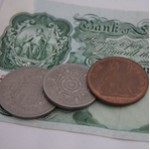
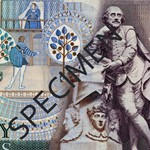
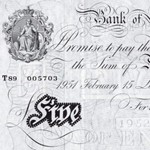
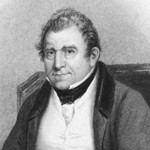

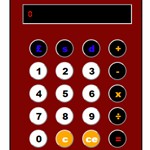


Comments